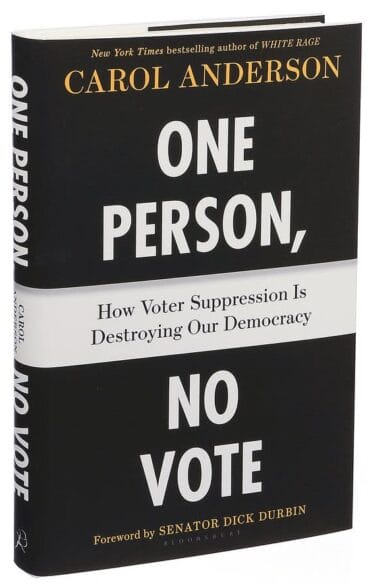
Sister District Book Club Reader's Guide
ONE PERSON, NO VOTE: HOW VOTER SUPPRESSION IS DESTROYING OUR DEMOCRACY by Professor Carol Anderson
Reader’s Guide prepared by Dr. Gaby Goldstein, Sister District Co-founder and Senior Vice President of Strategic Initiatives (SDAN)
Check out the Fireside Chat with Dr. Gaby Goldstein, Shehn Datta from All On The Line, and author Professor Carol Anderson! They discuss historical and modern voter suppression methods, the racial connections of voter suppression and ‘states rights’, and the false framing of voting rights as privileges with acceptable barriers. They also discuss how state legislatures can protect and broaden civil rights for all, as done by the Democratic Majority Legislature of Virginia in 2021.
Download the PDF: SDAN _ AOTL Book Club – One Person, No Vote Reader’s Guide
Topics: Voter Suppression, Voting Rights Act (VRA, 1965), 15th Amendment, Disenfranchisement, Racial Inequity, ‘States Rights’, the White Primary, Voter Roll Purge, Voter ID Laws, Gerrymandering, Fair Redistricting, Shelby v. Holder (2013), Help America Vote Act (HAVA, 2002), Supreme Court
UPDATED: 11/17/2021

